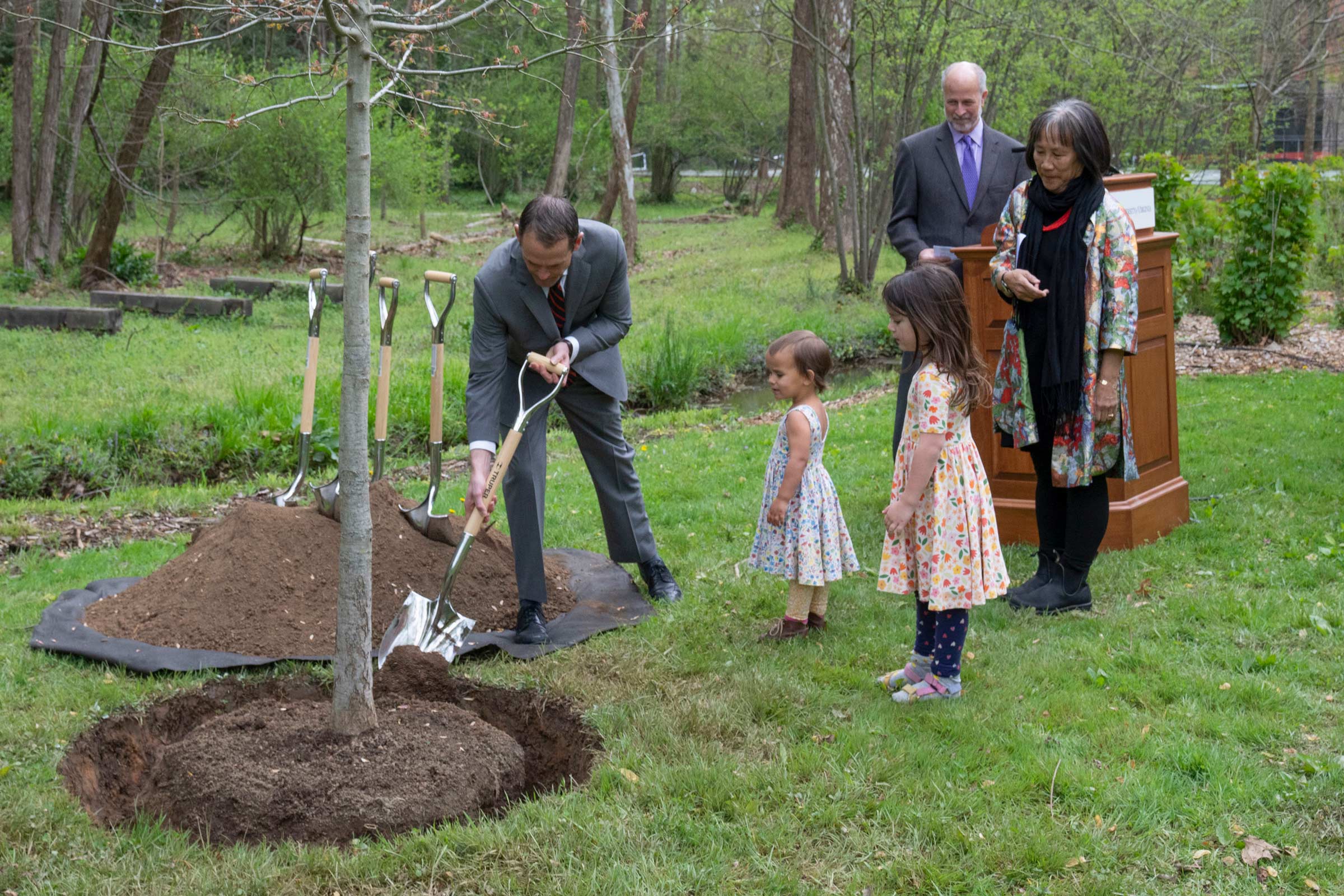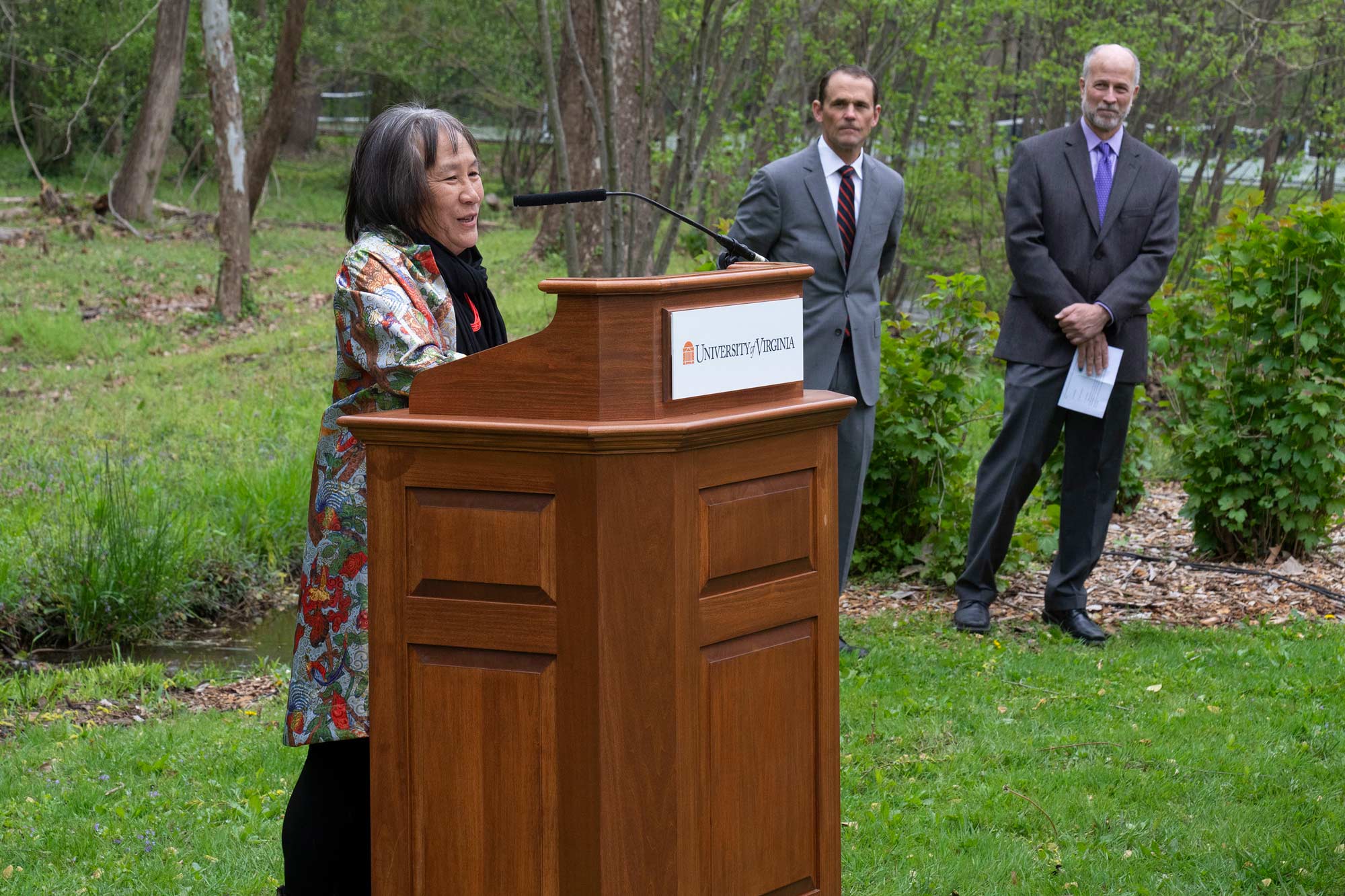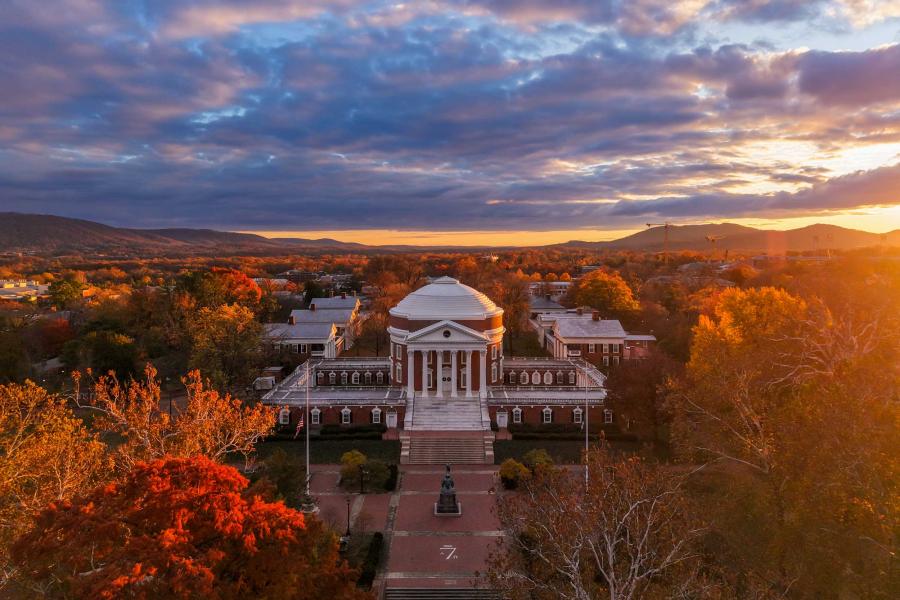At the end of the ceremony, Ryan placed the first shovelful of dirt at the base of the newly planted oak tree, then helped Takahashi’s oldest granddaughter add a shovelful of soil.
“Nancy was indeed a tireless advocate for the landscape of Grounds, especially as the landscape supports the University community and especially student life,” said Helen Wilson, senior landscape architect at the Office of the Architect of the University.
Takahashi first came to UVA in 1972 as a teen from Westchester County, New York, who decided to explore the world.
“When it came to college, I realized it was my chance to get away and to see a new part of the country,” she said. “UVA was one of my Southern school choices, and I think it was the dean of the School of Architecture, Joe Bosserman, who convinced me UVA was the place to come. Of course, the Lawn was so beautiful to see.”
She came to UVA shortly after women were admitted to the University on an equal basis as men. She stayed on to earn three degrees – a Bachelor of Science in Landscape Architecture in 1976 and master’s degrees in landscape architecture and architecture in 1985.
“I was one of a handful of women in that (1976) class of about 100 students,” she said, “and I started teaching right after that.”
Takahashi took a job in the University’s Planning Office in Washington Hall after receiving her bachelor’s degree and became familiar with Central Grounds. She got to know Hereford Residential College intimately, playing a role in planning for the college.
When the planning was complete, she applied to fill the opening as the college’s principal.
“It was just a wonderful experience for me,” she said. “My teaching had always been involved with graduate students, because the program in landscape architecture is a graduate program. At Hereford, I was involved in a community of undergraduates, of first-year students who were just remarkable, with energy and the craziness of being first-year students.”
Takahashi helped convert Hereford College’s garden from barren soil to a mini-farm for the students.
“When I first moved in as the principal, that was a parking area for the media for the football games,” she said. “It was just chunks of asphalt and gravel and we had to completely remake the ground to get it in any way close to fertile for growing crops there.”
Besides the garden, Takahashi served as a member of the University’s Arboretum and Landscape Committee.
“The thing that I really appreciated about the Arboretum Committee is that we were responding to individual projects that were coming up and raising issues and asking questions,” she said. “At some point, the Arboretum Committee started commissioning studies or funding studies that looked at larger issues, such as the Dell.”
Though Takahashi has retired from teaching, she continues many of her activities.
“I'm still trying to stay involved, but on my own terms,” she said.
She is working to salvage part of the compound in Arizona where her Japanese father’s family spent two years in an internment camp during the Second World War.
“I think it’s critical to preserve it to as proof that this did happen,” she said. “And by having the physical artifacts of the building, you can envision the people who were living there and tell future generations that this happened, that it is shameful and that it should not happen again.”
She also continues work on a research project she started while teaching in Winneba, Ghana, to preserve a lagoon near the city.
Looking back, Takahashi said she has learned a certain resilience during her life at UVA.
“Life is going to bring challenges all the time, unpredicted challenges, things that you can’t avoid,” she said. “But you have to face those challenges with grace and resilience and focus on solutions that will lead to a greater outcome, a better outcome than you might expect.”






